Audemars Piguet Brings Back The Starwheel Concept, Within Code 11.59
A fascinating display and watch of the early 1990s, now modernized.
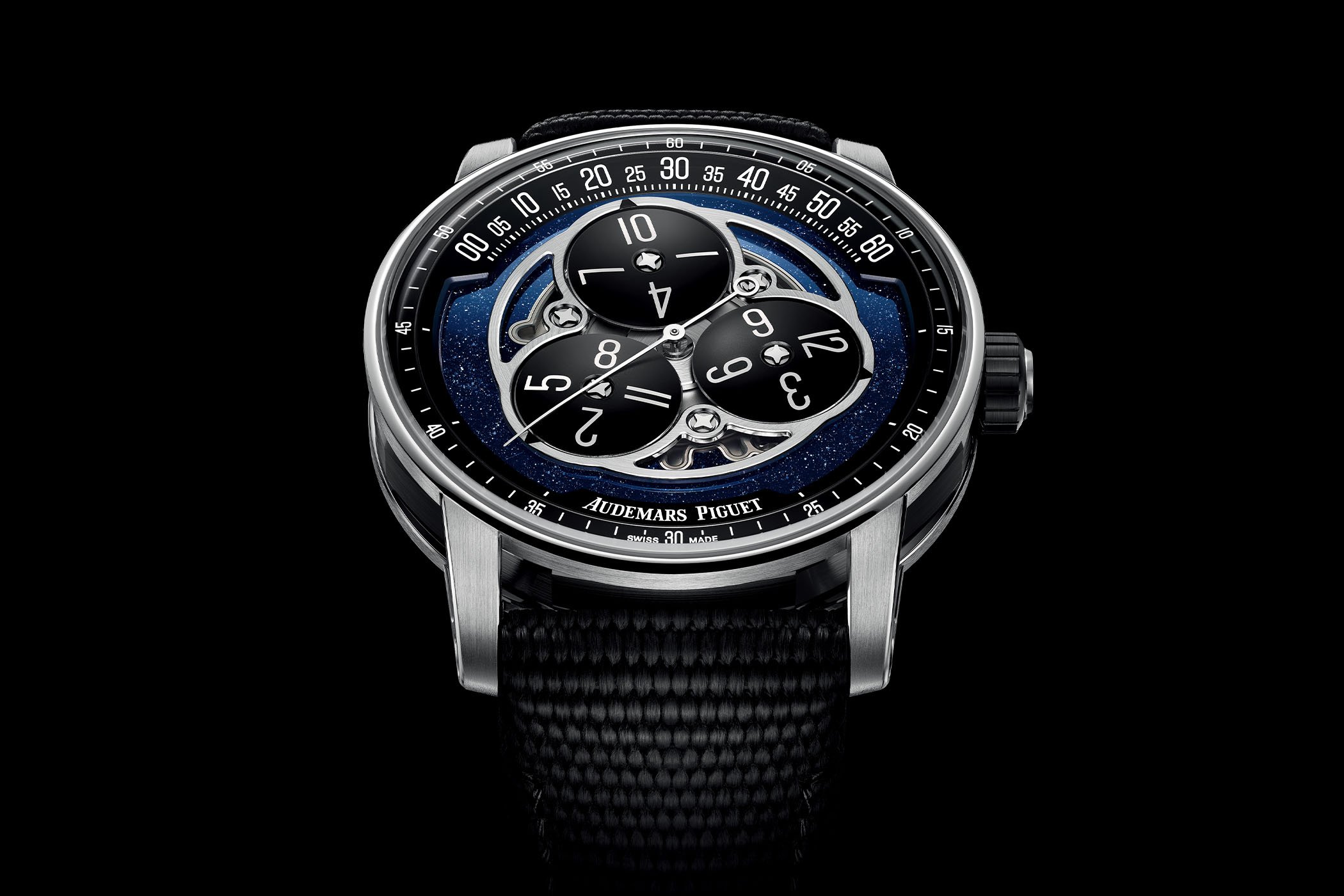
Wandering hours are one of the most fascinating displays of the watch industry. And if it’s often associated with modern indie watchmakers like Urwerk or with Audemars Piguet, it is actually a very old concept dating back to the 17th century. Yet, if the paternity of the system is far older than many would think, Audemars Piguet is often seen as the resurrector of the concept, with a famous watch born in 1991, the Starwheel. And this emblematic display, which has long been out of the collection, is now back in a bolder, more modern attire. Meet the Code 11.59 by Audemars Piguet Starwheel.
The wandering hour of the past, and Starwheel
The wandering hour system can be traced back to the 17th century (most likely in 1655) following a special request from Pope Alexander VII. Suffering from insomnia that was aggravated by the ticking of a clock, he ordered a night clock from the Campani brothers, with the request for a clock that would be silent and easy to read in the dark. The result was a clock with wandering hours where the time was read on a semi-circle in an aperture that indicated the quarter hours, which was also lit from the inside.

The complication will later be seen in pocket watches without backlighting but during the 19th century, the popularity of the wandering hours complication started to wane. It would be gradually replaced by the jumping hour that was to become typical of the Art Deco period. Yet, in 1989, an Audemars Piguet watchmaker rediscovered the wandering hours system in an article in the Journal Suisse d’Horlogerie. This was a period of increased creativity as the industry was seeing a revival of mechanical watchmaking.

In 1991, Audemars Piguet presented the Star Wheel reference 25720, an elegant, refined watch with wandering hours and with three stars that support the sapphire hour discs fixed on a large central wheel – a modernized construction that also broke the mystery of its operation by revealing the mechanism. During the period 1991 to 2003, around 30 star wheel models will be created, in various shapes and designs, within multiple collections and sometimes combines with other complications (such as a minute repeater).
The Code 11.59 by Audemars Piguet Starwheel
After almost 20 years of absence (the last of the first generation Starwheel dating back 2003), the concept is back. However, as you would expect from Audemars Piguet and its current modern and bold take on complications, the result, the new Code 11.59 by Audemars Piguet Starwheel, is rather different from the original watches, yet at the same time with an identical spirit.
This watch, like most of its predecessors, is all about exposing the complication on top of the dial. However, the exposing effect of the sapphire discs is gone, replaced by a different take on the wandering hours. The Starwheel is making a comeback in the Code 11.59 by Audemars Piguet collection, and has been redesigned to coincide with the modern shape of this collection – which has now been elected as the complication vessel for AP.
This new edition of the Audemars Piguet Starwheel is housed in the architectural Code 11.59 case, here presented in a combination of white gold – for the bezel, lugs and caseback – and black ceramic – for the case middle and the crown. A great contrast of colours that enhance the handsome, complex shape of this watch. All parts are meticulously finished, with an interplay of polished bevels and satin-finished surfaces. It is here paired with a casual textured black rubber-coated strap.
What matters most is the dial, positioned under a dual-curved sapphire crystal. Here, no need to say that there’s a lot going on. A blue aventurine back serves as a background for the ballet of the discs, which rotate on their own axle, as well as on a central axle – like planets in a tiny universe. The three slightly domed discs are made of aluminium and are tinted black thanks to a PVD treatment, before being adorned with an opaline sandblasted finishing touch. The white wandering hours numerals are then transferred onto the dial. The dial is framed by a glossy black inner flange, which features the all-time classic 120-degree minute sector, and something unprecedented for an Audemars Piguet Starwheel, a seconds track linked to a central seconds hand. Something that the brand did to add more animation, more playfulness to the complication.
Under the sapphire caseback is a well known base movement, shared with classic time-only Code 11.59 watches. The new version of this movement, Calibre 4310, has a module on top to display the wondering hours. The module is driven by a central axis, completing a complete revolution in 3 hours, itself driving the 3 discs by actuating star-shaped wheels underneath. Despite the new module, the movement retains its 70-hour power reserve.
The new Code 11.59 by Audemars Piguet Starwheel (reference 15212NB.OO.A002KB.01) will be offered as part of the permanent collection and priced at CHF 48,000. For more details, please visit www.audemarspiguet.com.

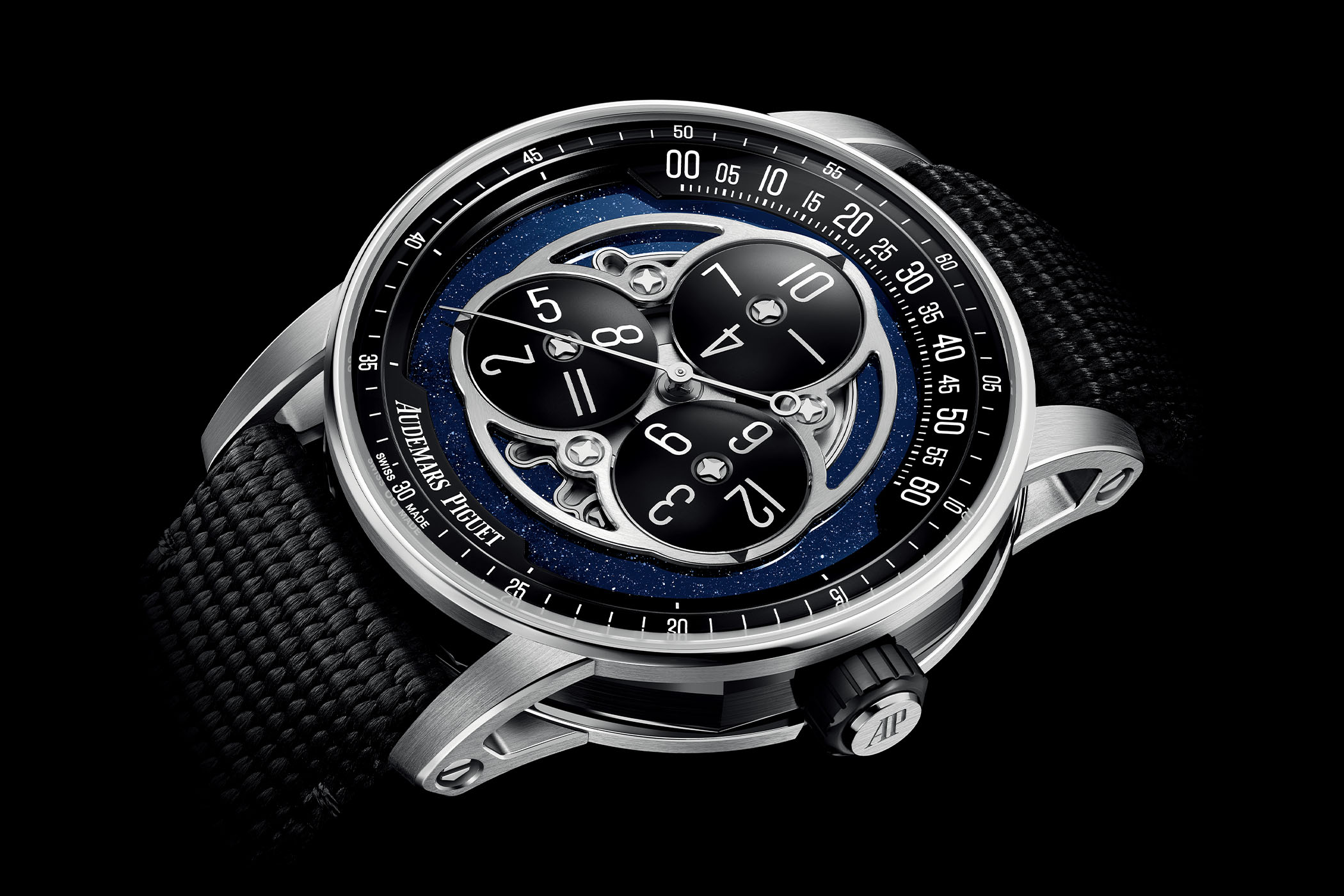
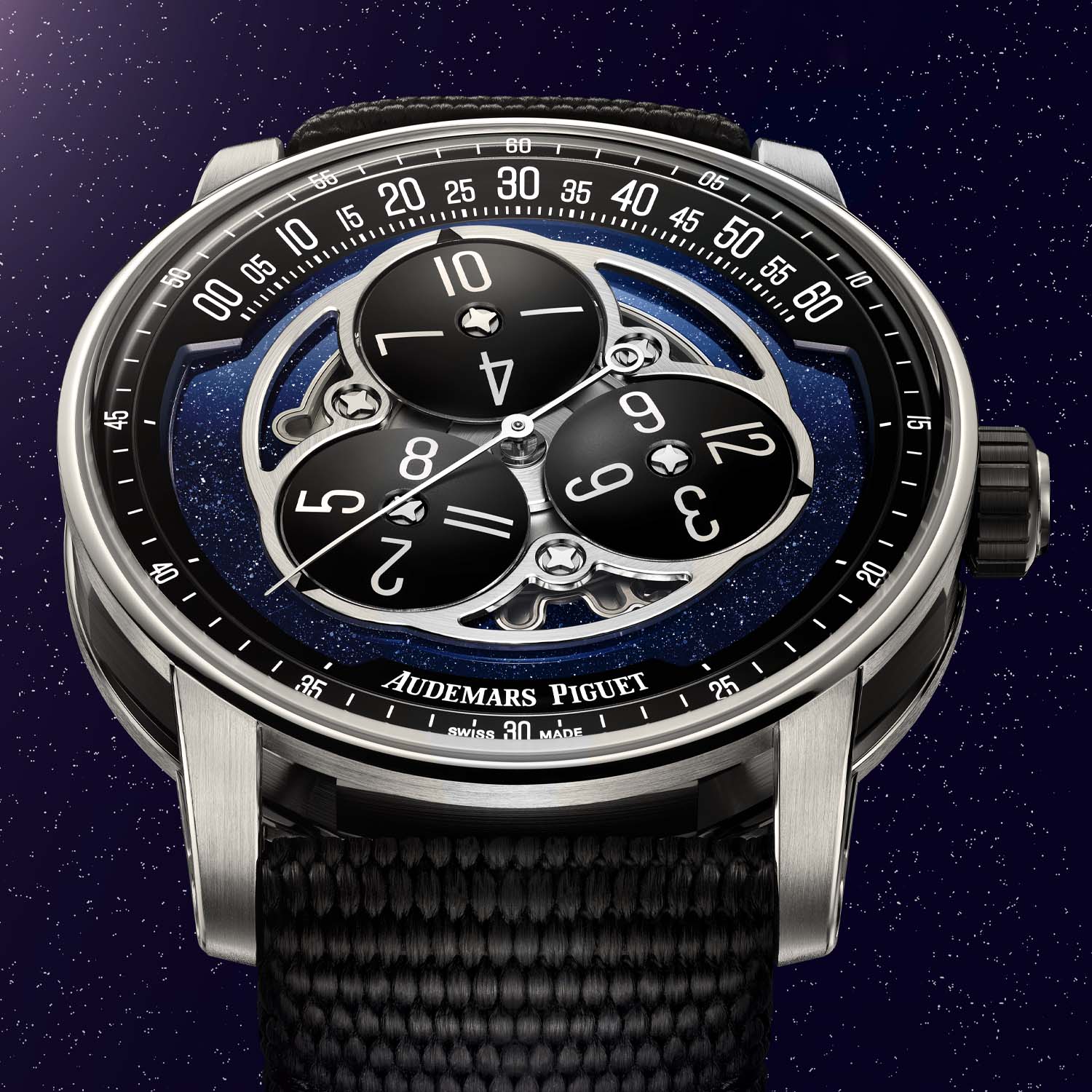
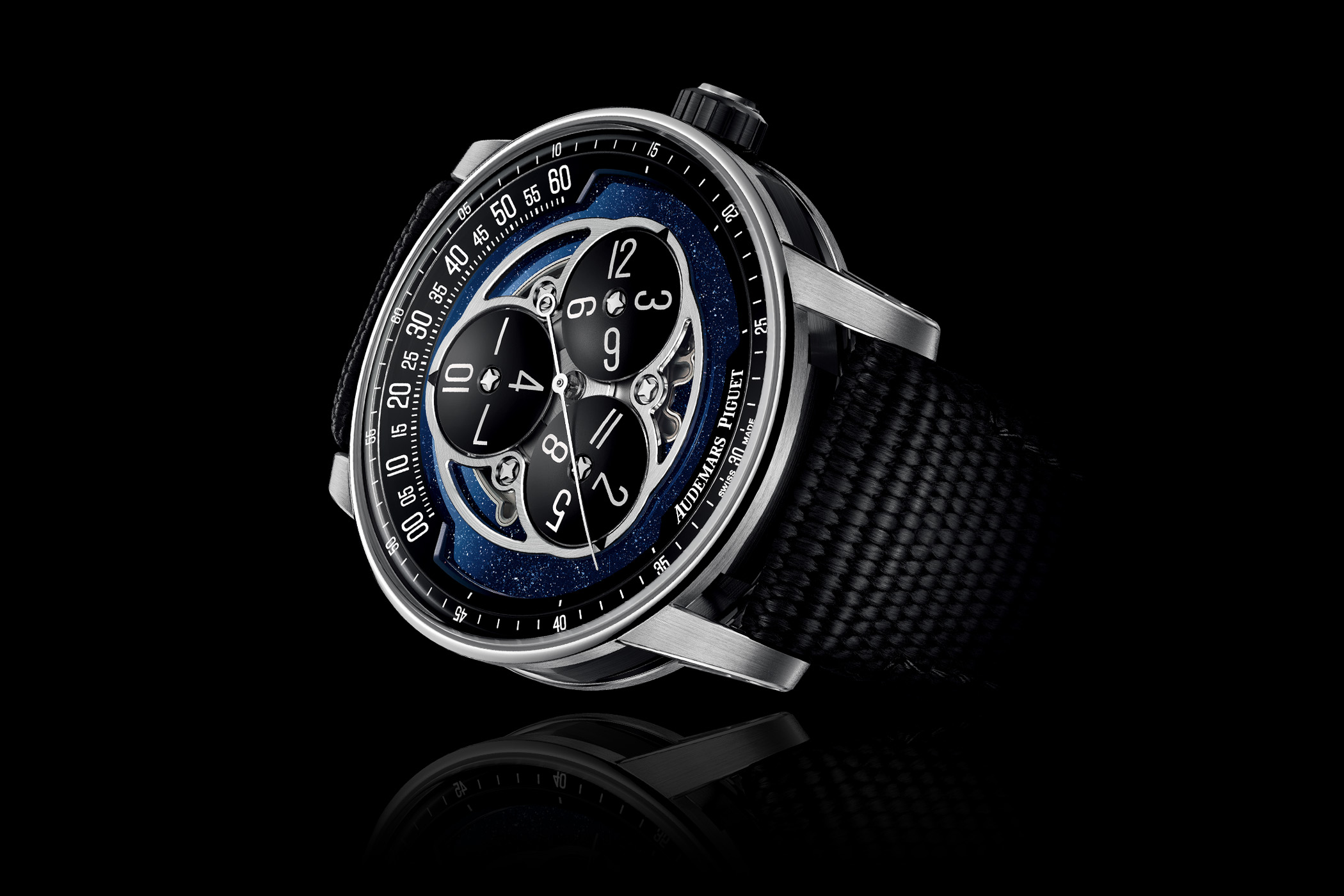
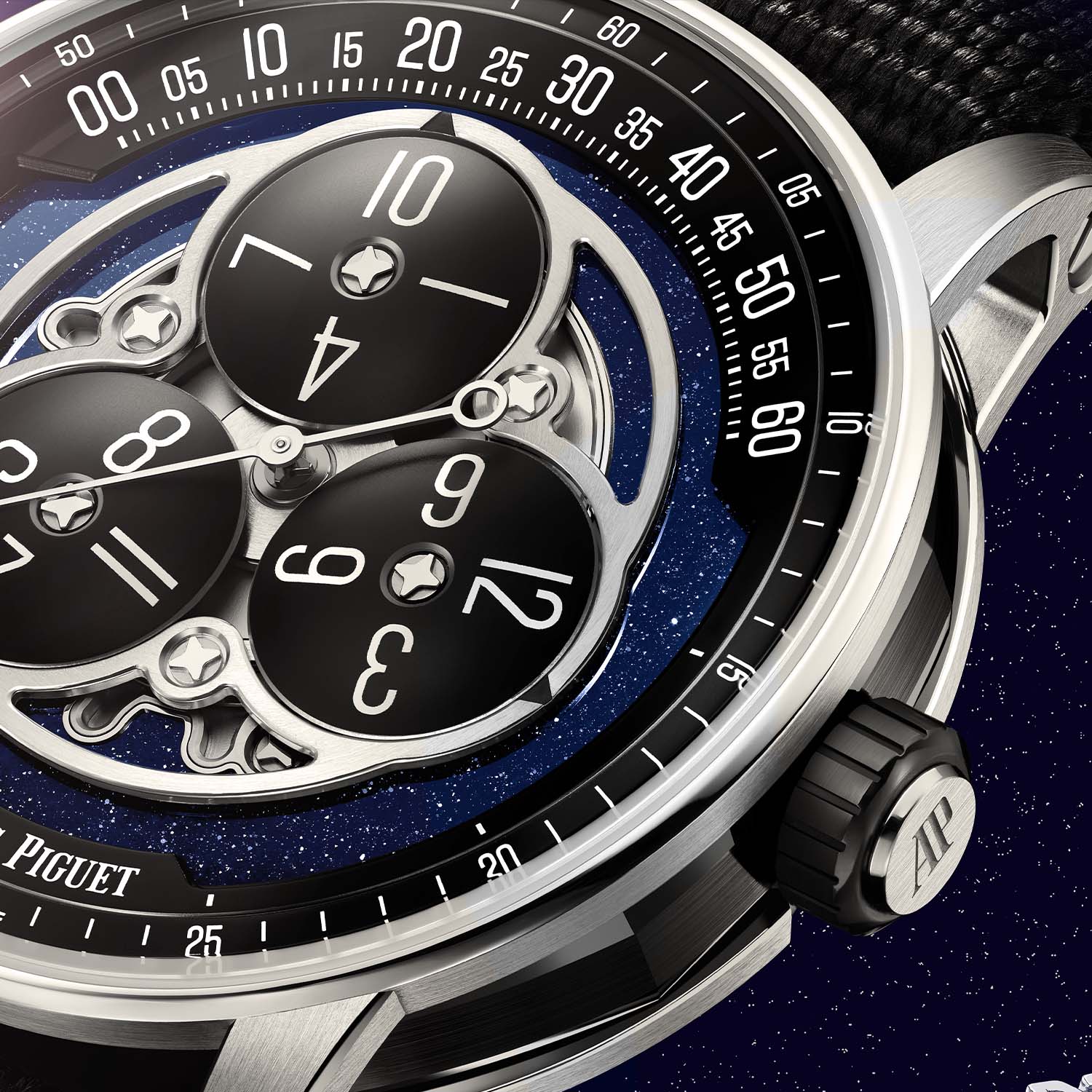
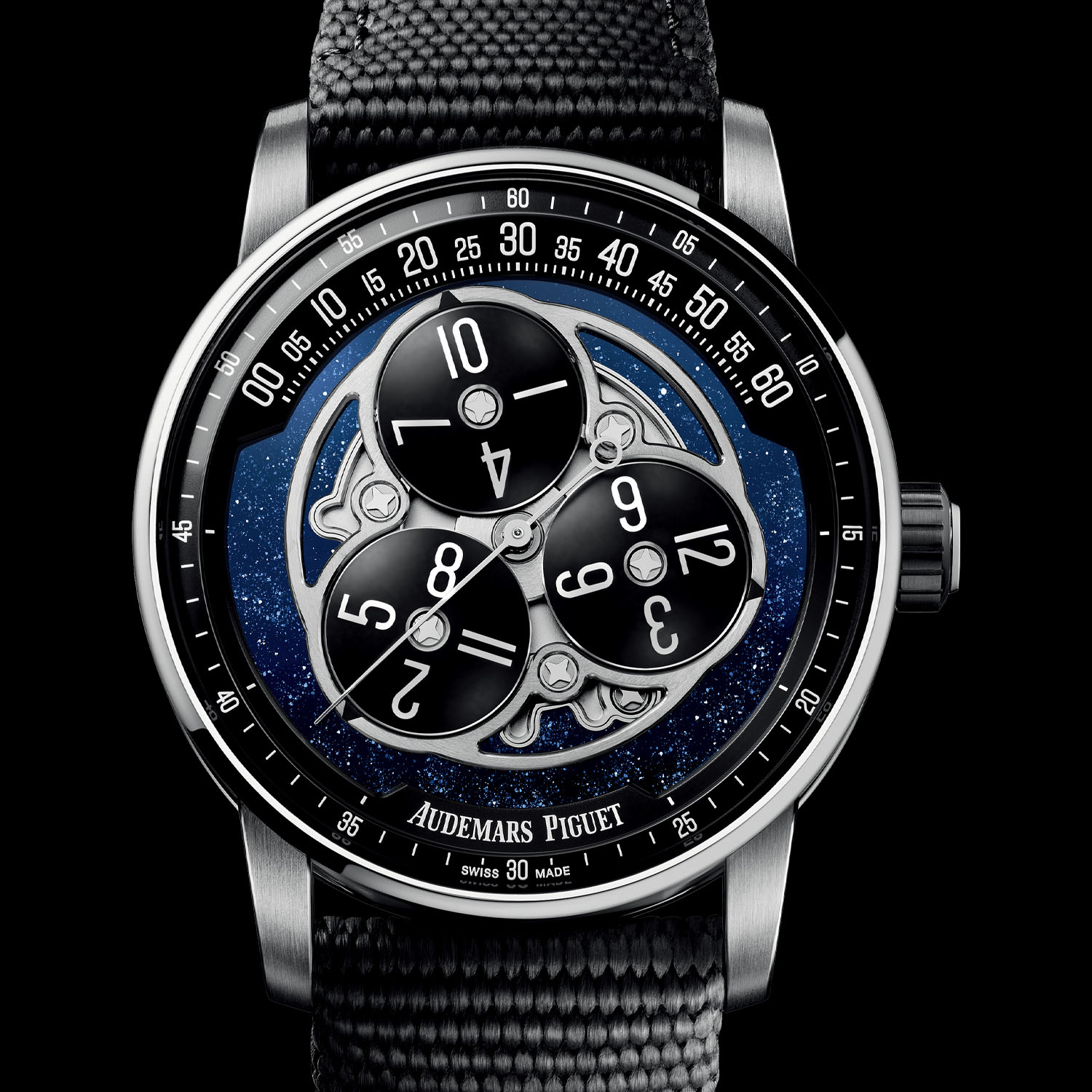

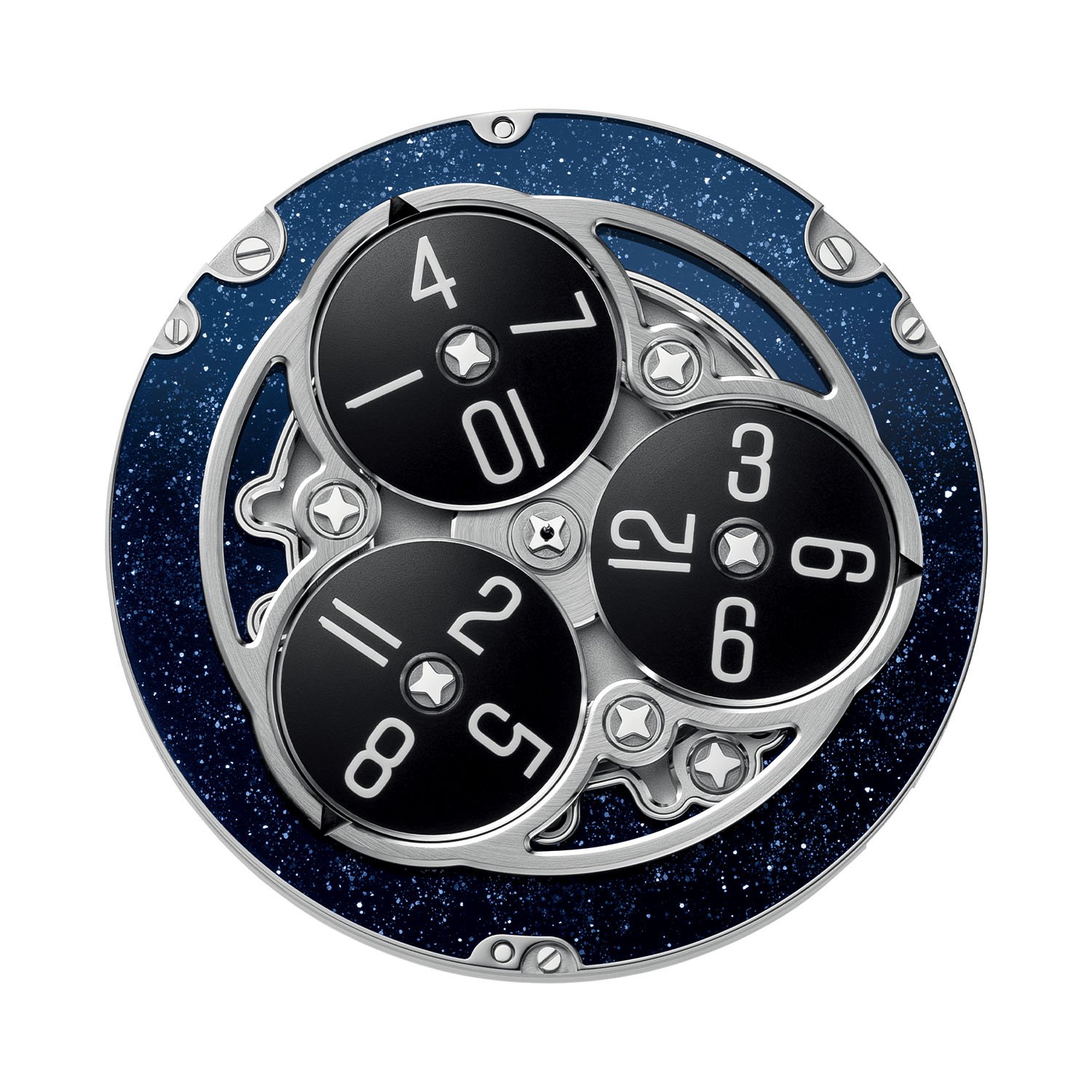




3 responses
It’s a far cry from the gorgeous 90s Star Wheel.
So what? Hard to read, frivolous, overly complicated just to display time.
beautiful how soon can get one ?